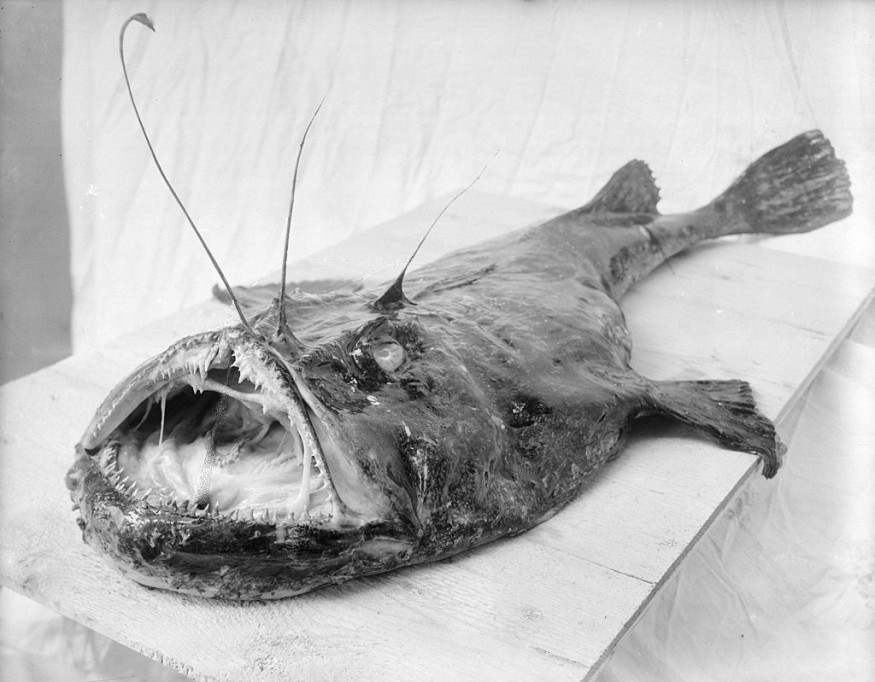In a very rare sighting, a Pacific footballfish was found washed up on the sand of a California beach. Spectators were amazed at the deep-sea fish because it was fully intact.
Pacific footballish fish is not a rare sea animal but rather it is extremely rare to see them on the surface because they live deep under the sea and uses bioluminescence to lure and catch their prey.

Deep-Sea Pacific Footballfish Washed Up On Crystal Cove Beach
Metro reported that a beachgoer named Ben Estes, was walking along the shore in Newport Beach in Orange County last Friday, May 7, when he spotted the strange-looking, big, rod-shaped, and dark-colored fish laying in the sand at Crystal Cove State Park.
Estes immediately reported what he saw to park rangers and lifeguards on duty. The next day, boating company Davey's Locker Sportfishing & Whale Watching shared some of the photos of the creature which they identified at a Pacific footballfish that measures around 18 inches.
The boating company wrote on Facebook: "though the fish itself is not rare, it is extremely rare to see on this intact along a beach in southern CA."
ALSO READ : Female Anglerfish Absorbs Males During Mating
Inspiration For the Animated Film 'Finding Nemo'
The 18-inch anglerfish identified as Pacific footballfish might look familiar to many people, especially those who grew up watching Pixar's animated films.
The sea creature commonly found at the depths of the ocean, about 3,000 feet below the surface, is one of more than 300 living species of anglerfish in the world. Seeing them on the shore is an extremely rare event.
According to CBS Los Angeles, this species may have served as the inspiration for the deep-sea fish that mesmerized Dory and Marlin of the animated film "Finding Nemo" when they happen to reach the depths of the ocean while on the journey to search for Marlin's son.
This fish has a long dorsal fish called an illicium that is only found in females. It extends in front of their mouths with a light bulb that they use to glow in the dark and catch their unsuspecting prey.
The remains of the Pacific footballfish that washed up n the Crystal Cove State Park beach are now in the custody of the California Department of Fish & Wildlife.
Why Did the Pacific Footballfish Wash Up On the Shore?
RARE FIND! Deep sea anglerfish washed up in Newport Beach on Friday morning! On Crystal Cove beach @CrystalCoveSP staff were alerted by beach visitor Ben Eslef and were able to retrieve this intact specimen.. pic.twitter.com/vERGy5Zujt
— Davey's Locker (@DaveysLocker400) May 9, 2021
Ichthyology collection manager Eric Post for the Florida biodiversity collection at the Florida Fish and Wildlife Conservation Commission's Fish and Wildlife Research Institute said that there are species of footballfish and anglerfish in the coastal waters of Florida, the Sun Sentinel reported.
But the fish recently found in Newport Beach was the result of "some sort of upwelling event," Post said. Jon Moore, a biology professor from Florida Atlantic University, added that the fish is a female Pacific footballfish and she also suspected that the fish surface because of upwelling.
NOAA's National Ocean Service defines upwelling as "a process in which deep, cold water rises toward the surface."
Moore said that it is remarkable to see the intact form of the Pacific footballfish given that scavengers and seabirds could have attacked it. It also means that the Pacific footballfish just recently died when it washed up on the shore.
Check out more news and information on Fish on Science Times.
© 2026 ScienceTimes.com All rights reserved. Do not reproduce without permission. The window to the world of Science Times.












